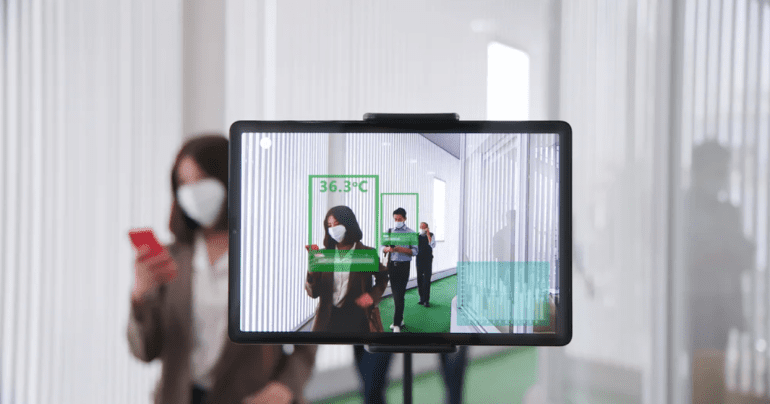- AI emerges as a pivotal tool in infection prevention and control strategies.
- Machine learning and deep learning facilitate predictive analytics and autonomous data extraction.
- Over 4,000 recent publications underscore AI’s transformative impact on healthcare-associated infection management.
- AI applications encompass surveillance, predictive analysis, antimicrobial stewardship, environmental monitoring, personalized patient care, and training.
- Examples include facial recognition systems for mask adherence monitoring and hand hygiene compliance tracking.
- Sensor-equipped robots revolutionize hospital sanitation practices with real-time environmental assessments.
- AI-driven analytics aid outbreak investigations by identifying disease transmission patterns.
- Despite its transformative potential, AI integration faces challenges, including knowledge gaps and regulatory hurdles.
Main AI News:
The 34th European Society of Clinical Microbiology and Infectious Diseases (ESCMID) Global conference, held in Barcelona, Spain, served as a pivotal platform for deliberating the integration of artificial intelligence (AI) in optimizing infection prevention and control strategies.
AI serves as an encompassing term delineating the utilization of technological advancements to augment human endeavors. Within this domain, machine learning and deep learning emerge as pivotal subfields. While machine learning hinges on human intervention for predictive analytics and data extraction, deep learning autonomously conducts complex data analyses, heralding a new era of automation.
Over the past half-decade, there has been an exponential surge, with nearly 4,000 new publications spotlighting AI-driven tools for combating healthcare-associated infections (HAIs). This represents a substantial escalation from the 1,350 analogous studies spanning over four decades until 2018. Undoubtedly, the AI revolution is firmly entrenched in contemporary healthcare paradigms. Its applications span across surveillance, predictive analytics, antimicrobial stewardship, environmental monitoring, personalized patient care, and educational modules. The transformative potential of AI resonates in its capacity to avert fatalities, enhance healthcare workforce conditions, and streamline operational efficiencies while curtailing costs.
Illustratively, AI deployment manifests in innovative avenues such as facial recognition systems for monitoring face mask adherence within medical facilities. Leveraging facial feature extraction algorithms, these systems discern mask compliance with precision, bolstering infection control protocols. Likewise, hand hygiene adherence garners AI scrutiny through convolution neural networks and computer vision algorithms, ensuring optimal compliance with hand hygiene protocols outlined by the World Health Organization. Such interventions have demonstrated commendable accuracy, with a 93.33% efficacy in germ detection and an 85.5% compliance rate with hand hygiene norms, as corroborated by a 2022 study.
Furthermore, the advent of AI augurs a paradigm shift in hospital sanitation practices, with sensor-equipped robots orchestrating real-time environmental assessments to optimize disinfection protocols. Moreover, AI-driven analytics facilitate outbreak investigations by delineating intricate network graphs that delineate patient interactions, room dynamics, and healthcare personnel movements to identify potential disease vectors and proffer targeted decontamination strategies.
Notwithstanding the burgeoning discourse surrounding AI’s transformative potential, its integration into infection prevention and control remains nascent. Stakeholders acknowledge that realizing AI’s full potential necessitates a collaborative ecosystem, bridging healthcare expertise with AI proficiency. In addition to the knowledge gap, regulatory lacunae pose formidable obstacles to widespread adoption. Thus, while the vista of AI in infection prevention brims with promise, its realization hinges on concerted efforts to surmount existing barriers.
Conclusion:
The burgeoning integration of artificial intelligence in infection prevention and control heralds a transformative era for the healthcare market. While promising, its realization necessitates collaborative efforts to bridge knowledge gaps and navigate regulatory hurdles. Stakeholders must strategically invest in AI-driven solutions to optimize healthcare outcomes and operational efficiencies, ensuring sustained market relevance and competitive advantage.

